Chris Brunner – January 8, 2021
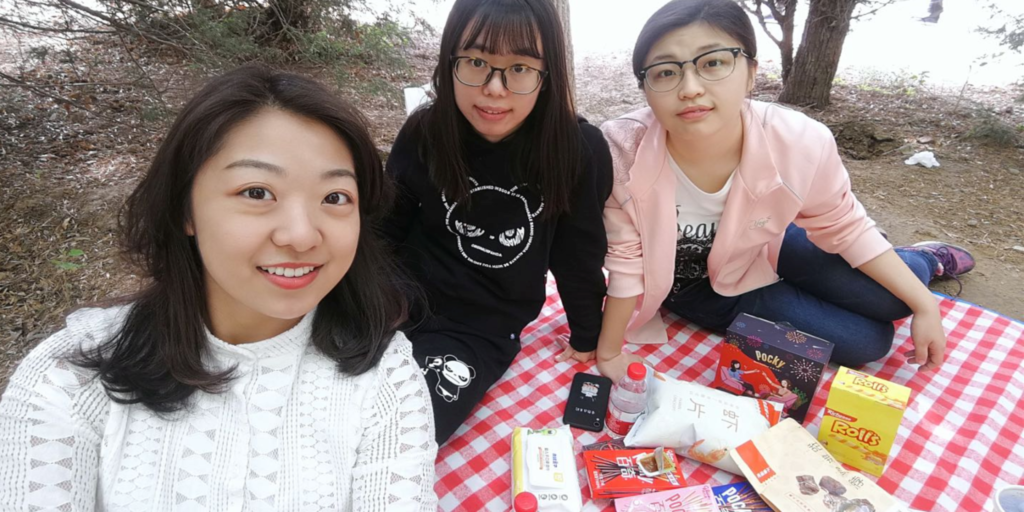
The atmosphere in the Mexican restaurant was a cheerful and warm respite from the unexpectedly chilly weather that night in Beijing in November 2019. Gloria couldn’t attend the reunion dinner because of previous commitments with her research in the lab. Cherish and Smile were seated across from me at the table as we reminisced about a past reunion dinner held in Beijing two years earlier. They brought me up to date on their current studies and future career dreams. The girls expressed gratitude for their friendship that had helped them over the hurdles of the demanding duties and deadlines of graduate school. They had experienced some very trying times. Although Gloria couldn’t be there to share her side of the story, it was obvious the girls had each other’s back. The tenderness Smile expressed as Cherish related some especially difficult trials touched my heart. They truly appeared as sisters.
As we walked out into the frigid air of the night and embraced, saying goodbye, not knowing when we’d have the chance to meet again, I had an overwhelming sense of the bonds of friendship which had sprung from the active classroom discussions, noisy field trip bus rides and lively dinners of our One Health conferences. The friendship touched my heart as I was enveloped in the warmth of an enduring sisterhood. It was in a sense a Sisterhood of One Health.
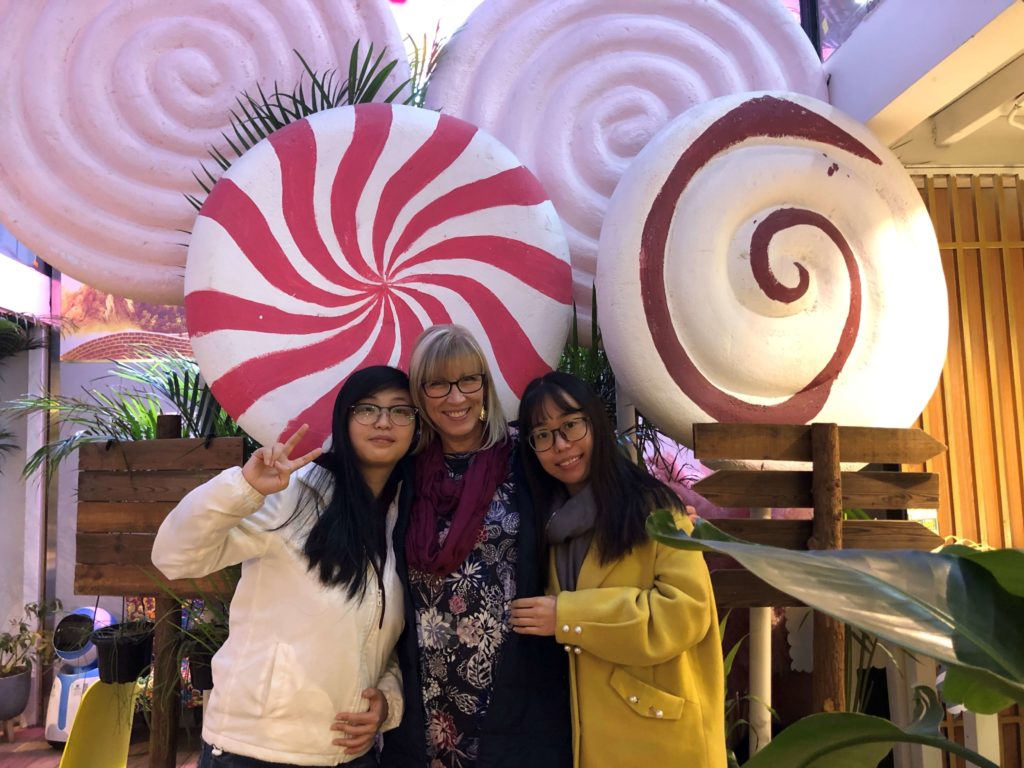
On my return to Davis I immersed myself in preparations for the upcoming UC Davis Education Conference on One Health for Food Safety and Security. The 2020 winter conference launched in late January but ended abruptly the first week in February as restrictions from the coronavirus outbreak required the students return home after spending only two weeks in Davis. We scrambled to complete the last week of the conference online. Fortunately, the students had a chance to bond on teams and travel on an out-of-town field trip during their short stay in Davis, so friendships they’d forged in Davis made it a natural transition to complete their team reports, albeit from their separate homes in China.
The story of the sisterhood began in the collegial atmosphere of the 2016 One Health winter conference, sponsored by Nanjing Agricultural University and hosted by WIFSS. Cherish, Smile, and Gloria had a chance to become better acquainted with one another on the field trip to San Francisco and Central Valley dairies during the conference. Once they returned from the field trip, they were inseparable and spent all their lunches together for the remainder of the conference.

Cherish
LI Yong, Cherish, was majoring in Food Quality and Safety at Nanjing Agricultural University when she attended the 2016 conference. She has since received her master’s degree in nutrition & food hygiene from the School of Public Health at Peking University. She will be heading to King’s College in London in January 2021 to pursue her PhD in nutrition as she studies polyphenol metabolites with cardiovascular health.
“Thanks to the One Health Conference, I met my best friends Gloria and Smile. We went through a lot of hardships from NAU to our graduate school now and all these experiences we spent together bond us more and more tight. Now I cannot imagine what my graduate school life would be without them. The One Health Sisterhood really helped me to become a better and stronger person whom I want to be.” – Cherish
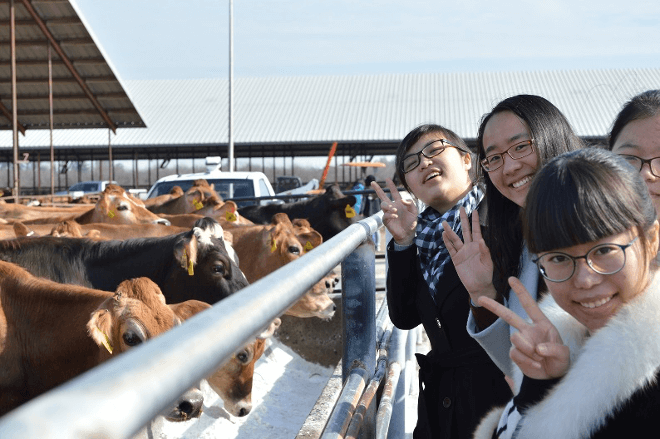
Cherish learned the importance of collaboration through team building activities with other students from various study backgrounds. It taught her how teamwork can improve work efficiency, and this served her well throughout her graduate project. She says she will spread the integrity of One Health when she gets to King’s College, as she believes, “The one health approach can be used in many scientific projects and this approach is of great importance for us with scientific issues.”
During the 2016 winter conference Cherish was the team leader for a multidisciplinary project with 31 other students from eight majors. As a volunteer, she helped the international students from various provinces in China adapt to their campus life at UC Davis and participate in different activities. She is fluent in English and is self-taught in her Spanish language skills.
Cherish initiated, designed, and executed a cross-sectional study as her M.S. project, which explored the relationship between dietary pattern and bone mineral density (BMD) in pregnancy. She also collaborated with group members in a cohort study, which evaluated the effect of dietary pattern on BMD of mothers and infants during lactation.
“I believe the close friends are the ones whom can understand you best and the way to maintain this close relationship is to keep in touch and try your best to help them whenever they need my help.” – Cherish
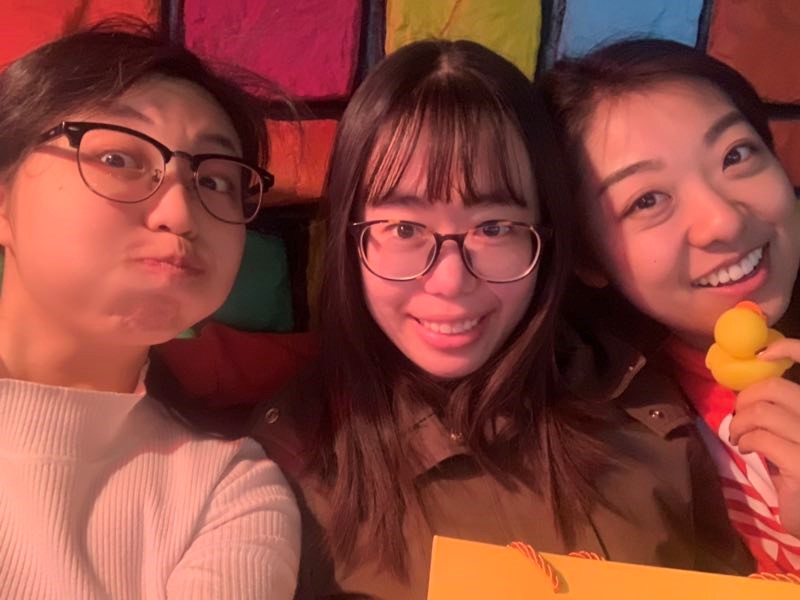

Gloria
MENG Shiting, Gloria, majored in Ecology at NAU. She studied at Beijing Normal University where she majored in Natural Resources, which is closely related to geography and sustainability science. She plans to bewill begin her career as a geography teacher at junior school in Beijing. Gloria believes her future career will help solve problems to do with the health of people, animals, because geography is the subject that studies the relationship between human and environment to achieve the harmony between nature and society, which is in line with building “Ecological Civilization” in China.
“Attending the One Health conference helped me a lot when applying for a youth forum in Japan. The interviewer thought highly of my role as a speaker, as well as the multidisciplinary background I had. The topic of the forum was “Nature’s benefits to people,” and it was at that forum that I found my interest in ecosystem service research. So, when I chose my major for graduate school, I carried on the passion in ecosystem service.”- Gloria

“What I learned in the conference can be concluded by: leadership, group work, One Health and friendship. I was impressed by the multidisciplinary discussion, because it can enrich my understanding of specific issues and help me jump out of my circle to see more possibilities. Besides, I came to know that I need to get more engaged and well prepared in the group work for a good outcome.”
“I’d like to serve in a leading role to solve an important problem based on what I learned in the One Health program. The interdisciplinary approach is useful for my study on ecosystem services.” – Gloria
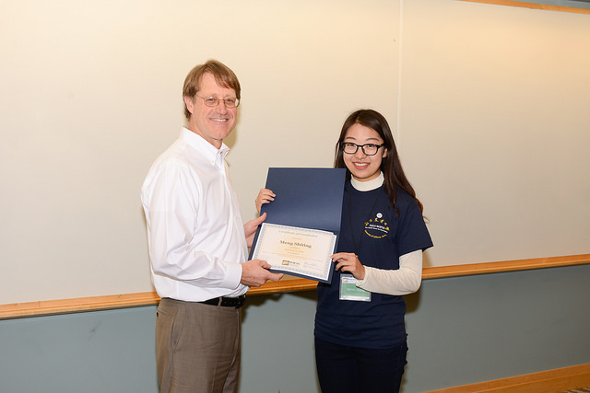
Gloria describes the type of team she would put together for her study on ecosystem services:
“Ecosystem services are nature’s benefits to people; it connects natural system with society during a series of ecological processes. Typical ecosystem services include food supply, water conservation and air purification, all of which are at the interface of people, animals and environment. In my study, I would focus on the balance between the supply and demand of ecosystem services to provide advice for decision-making progress. In order to meet the need of people’s requirements for ecosystem services and maintain regional sustainable development, I would gather a group of geographers, residents, government officials and city planners. Among them, geographers are responsible for the ecosystem service assessment through collecting data, building models and mapping. Residents will be invited to finish the survey about their demand of ecosystem services and share their opinions on regional planning. Then, the outcomes of the assessment (ES mapping) and respondents’ opinions will be showed to government officials, and the focal places for optimization can be selected. After that, city planners will design regional planning by incorporating the top-down and bottom-up solutions.”
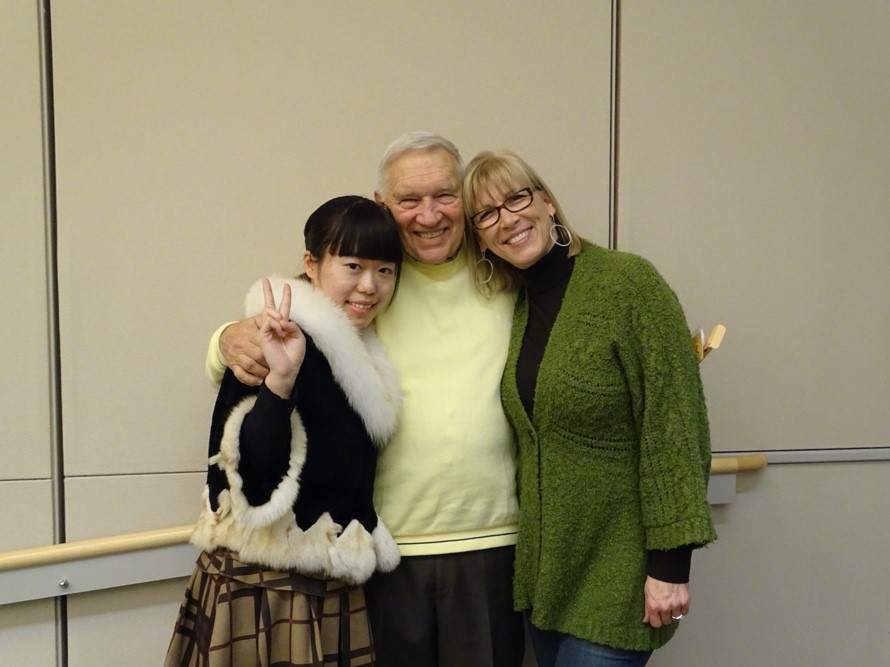
Smile
YUAN Xiaoyang, Smile, was majoring Horticulture at NAU when she attended the One Health conference in 2016. She resides in Beijing where she attends the University of Chinese Academy of Sciences, where she is pursuing a PhD in Plant epigenetics.
Smile says she is sure she will use a One Health approach to solve problems in her future career as a scientific researcher or a biology teacher. And she thinks her PhD project about plants responding to high ambient temperature will help solve environmental problems.
Smile explains her current scientific research about how plants respond to ambient temperature: “As we all know, crops are sensitive to climate change, including changes in temperature and precipitation, and to rising atmospheric CO2 concentration. Among the changes, temperature increase has the most likely negative impact on crop yields. Meteorological records show that mean annual temperatures over areas where wheat, rice, maize, and soybean are grown have increased by ∼1 °C during the last century and are expected to continue to increase over the next century. The people in my lab are doing some research work at the molecular level. But molecule is far from life, we need to make our research become useful. That needs people from all aspects to work together. For example, if we find a new gene that could affect plant response to a warmer ambient temperature at the molecular level, a seed company may be interested in cultivating a transgenic plant which could be adapted to a warmer environment. Researchers and public health officials will need to check the trait and quality of the seeds for productivity and safety of the altered plants according to the rules made by policy makers. Marketing specialists can assess the price of the seeds and sell the seeds to farmers. Finally, there may be better plants more adaptable to an elevated ambient temperature.” People work together to do these well, to make a better world, and to share ‘one health’.
“Everyone and everything in the world share one health. We need to live in harmony with nature. One health taught me to work together and combine different aspects to solve one major problem.” – Smile
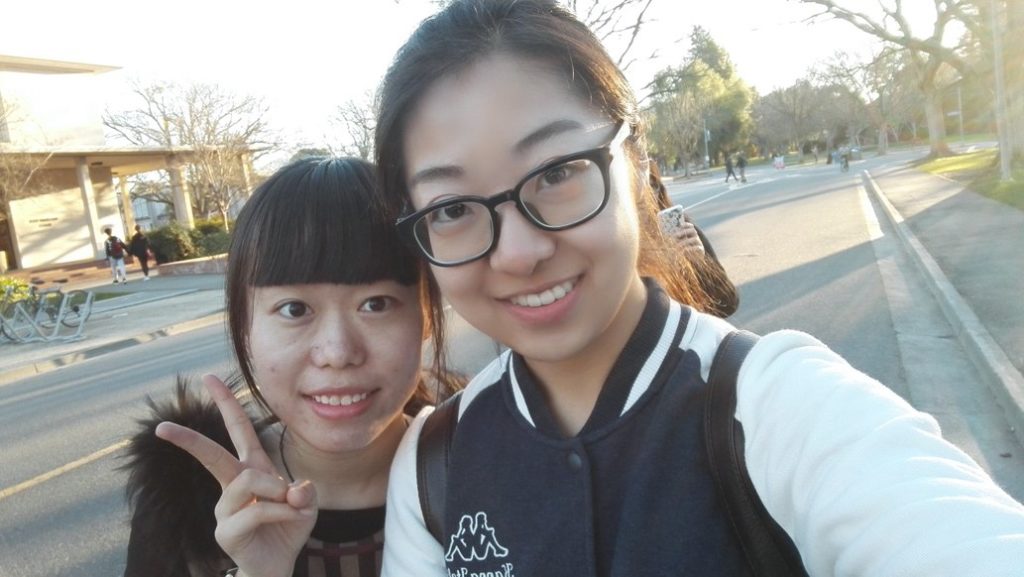

Planting Seeds
This enduring bond of friendship that I dubbed the Sisterhood of One Health more than one year ago on that chilly night in Beijing embraces an ever-expanding number of members, both female and male. The friendship that I witnessed that evening represents the branches of a mighty tree grown from a seed that was planted years before at UC Davis. At our WIFSS One Health conferences we talk about the dear uncle who planted a seed that grew a mighty tree.
These trees will take root in countries around the world. This is the way to bring about lasting change, from the ground up, not from the top down. Cherish, Smile, Gloria, and other members of the sisterhood will plant seeds and raise awareness about the interconnection between the health of people, animals, plants and their shared environment thereby lighting the fire of other’s understanding about One Health and the role it plays in improving food safety in all areas of the food chain from the soil to the consumer. One Health is the ultimate means of interconnecting all aspects of a safe and secure food supply from healthy soil to the consumer.
Power of One
Think of the power of one teacher in a classroom, such as Gloria and Smile possibly in a biology or geography classroom as they light a fire to the understanding of the concept of One Health. This is reminiscent of the student who attended the 2017 winter conference and wrote a note to the teacher expressing thanks for the education which had lit the fire of her understanding of the link between people, animals, and the environment.
At conferences, students hear about the Power of One. The number one has magical powers to multiple into many ones. Take for example the two young men who returned from attending the inaugural One Health conference in the winter of 2015 to establish a student One Health club at Nanjing Agricultural University, now called the One Health International Association of Nanjing Agriculture University (OHIA of NAU). What’s more, the OHIA has been formally accepted as a member of International Student One Health Alliance (ISOHA) and is the only student association from China. The One Health Challenge under the leadership of Gigi Wang and Zou Yuntong an 8-week competition supported by the OHIA and Nanjing Agricultural University, Office of International Relations and requires the participants to work in groups to put forward some feasible One Health plans to solve the daily problems by interdisciplinary teamwork, inspiring people to realize how to practice the One Health concept in their daily lives. This event is also highly supported by the University of California, Davis, Western Institute for Food Safety and Security.
This is an example of the grassroots approach I spoke of earlier. Students are empowered to act independently to solve problems. They are the generation who will bring solutions to the problems that impact the health of people, animals, and the environment.
Through the guidance of team facilitators at our conferences an atmosphere of openness and cooperation is cultivated, whereby team members feel comfortable to express their hypothesis to solving a complex One Health problem of their choice. Xu Jie from the 2016 winter conference had this to say about the encouraging learning experience:
“I’m a shy girl, so it’s hard for me to discuss the questions with professors in class. Maybe one reason is I have not enough confidence to express my thoughts using my poor oral English, but I have tried my best to overcome it, and I did It, I’m proud of myself. In addition, in Davis, I saw the other way of teaching that is very different from the way of China, which is more like great communication between students, there is no right or wrong but “Good question.” It’s the new ability I learned in Davis that smiling to everything.”
The two young men, Michael Luo and Peter Hui, who established the first student One Health Club of its kind in China, and the leaders of the club who have followed, such as Gigi and Zou, can proudly number themselves in the sisterhood, as can the numerous students and teachers whom I number as my friends and colleagues. These branches of a mighty tree are an influence for change, and they will in turn plant seeds that grow mighty trees.
The sisterhood is nourished by bonds of friendship that have no borders or boundaries. It’s grounded in teamwork, multidisciplinary collaboration, mutual respect, science-based truth seeking, and love.
WIFSS One Health outreach and training is grounded in the motto that we Educate People Because People Change the World.
We are, after all, one world, like Smile said –
“Everyone and everything in the world share one health.”
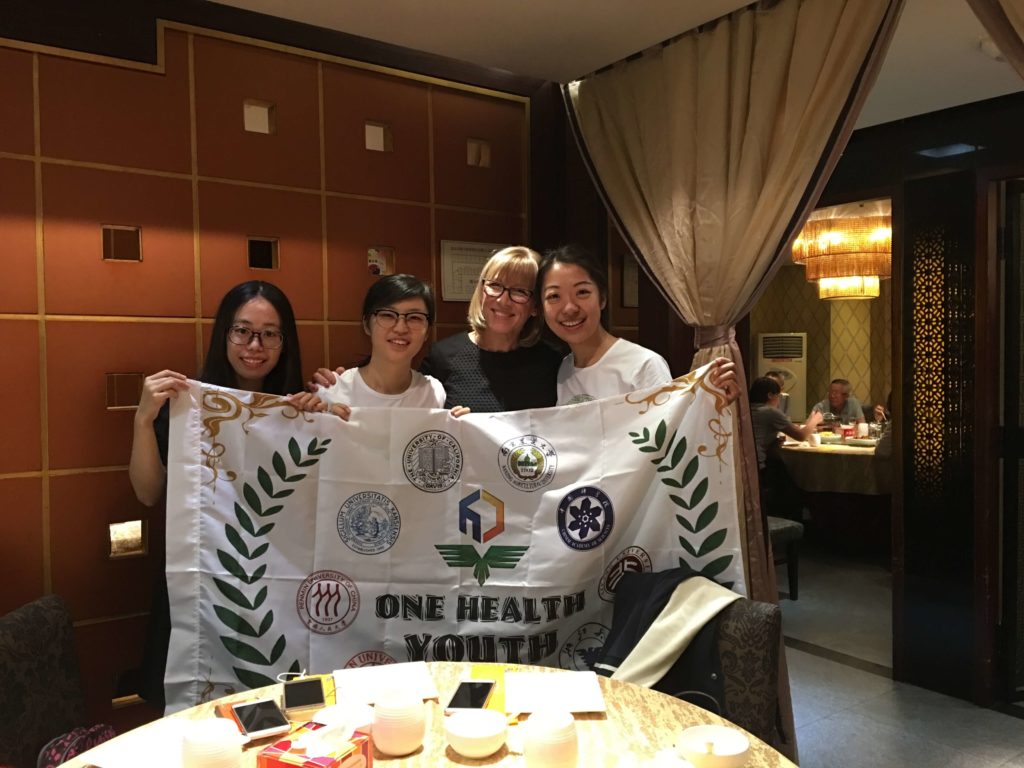
Epilogue
Smile tells me that after an extraordinary year of 2020, Cherish, Gloria and she are all going to embrace a new identity, a new state and a new life. Cherish is preparing to take a flight to London and get her PhD degree. Smile feels happy for Cherish but says it hurts to think that she can only meet Cherish once or twice a year. Smile says she will miss Cherish when she is far away from her.
Gloria is set to become a junior high school geography teacher. Smile thinks Gloria will stay young and energetic with her students and enjoy every day in school.
Smile reports, “Recently, Gloria is immersed in sweet love, and she and her boyfriend will be engaged soon.”
Smile is getting married in 2021, the first wedding girl of the sisterhood. Cherish is unlikely to be able to attend Smile’s wedding, so Smile will invite her to her hometown in the future. Cherish and Smile secretly agreed that Cherish will be the godmother of Smile’s first child. It means a lot to Smile that Gloria and her boyfriend will come to the wedding.
The girls met just before Christmas and Smile was touched that Cherish and Gloria gave her birthday gifts in advance. The next reunion may be after several months, but they will remember each other in their hearts.
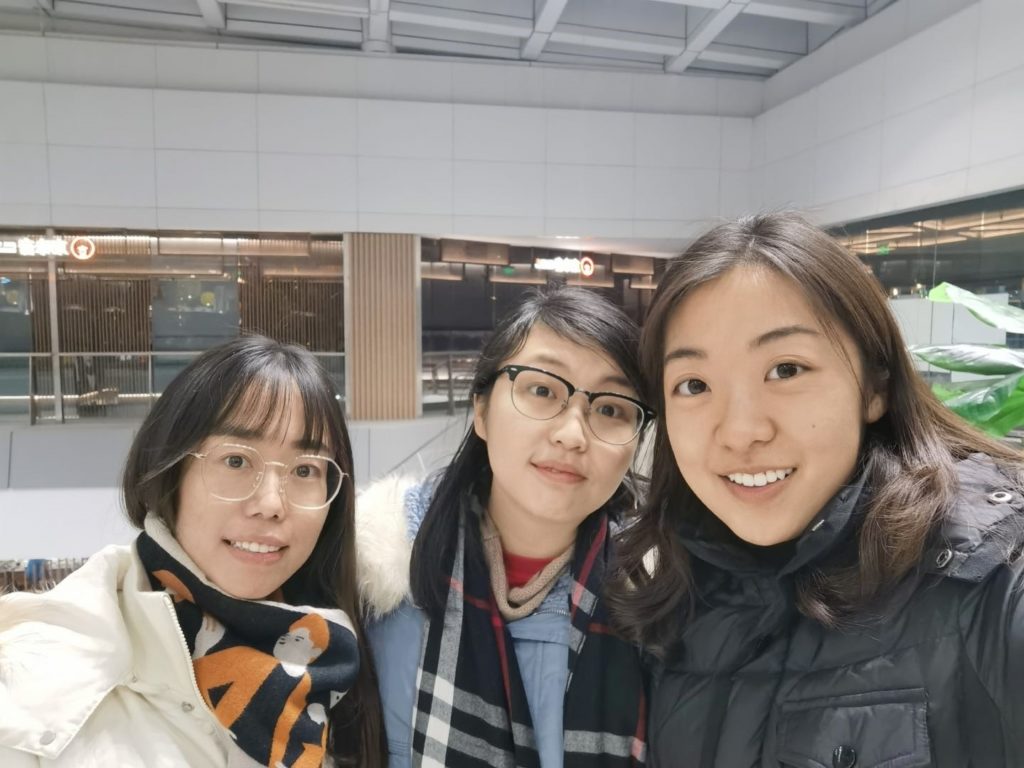

Smile, Cherish and Gloria at reunion dinner in Beijing in December 2020. They promise to each other: “We do not regret the past, we have confidence in the present, and we are full of hope for the future.”
Media contact
Chris Brunner, Communications and International Programs Director, WIFSS, cmbrunner@ucdavis.edu

